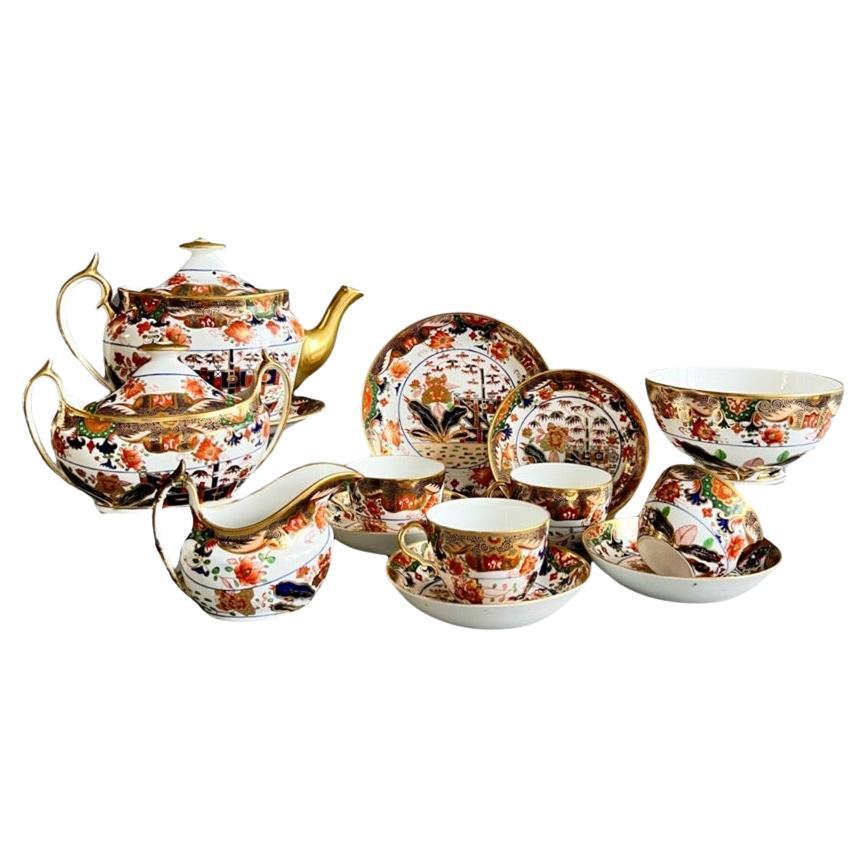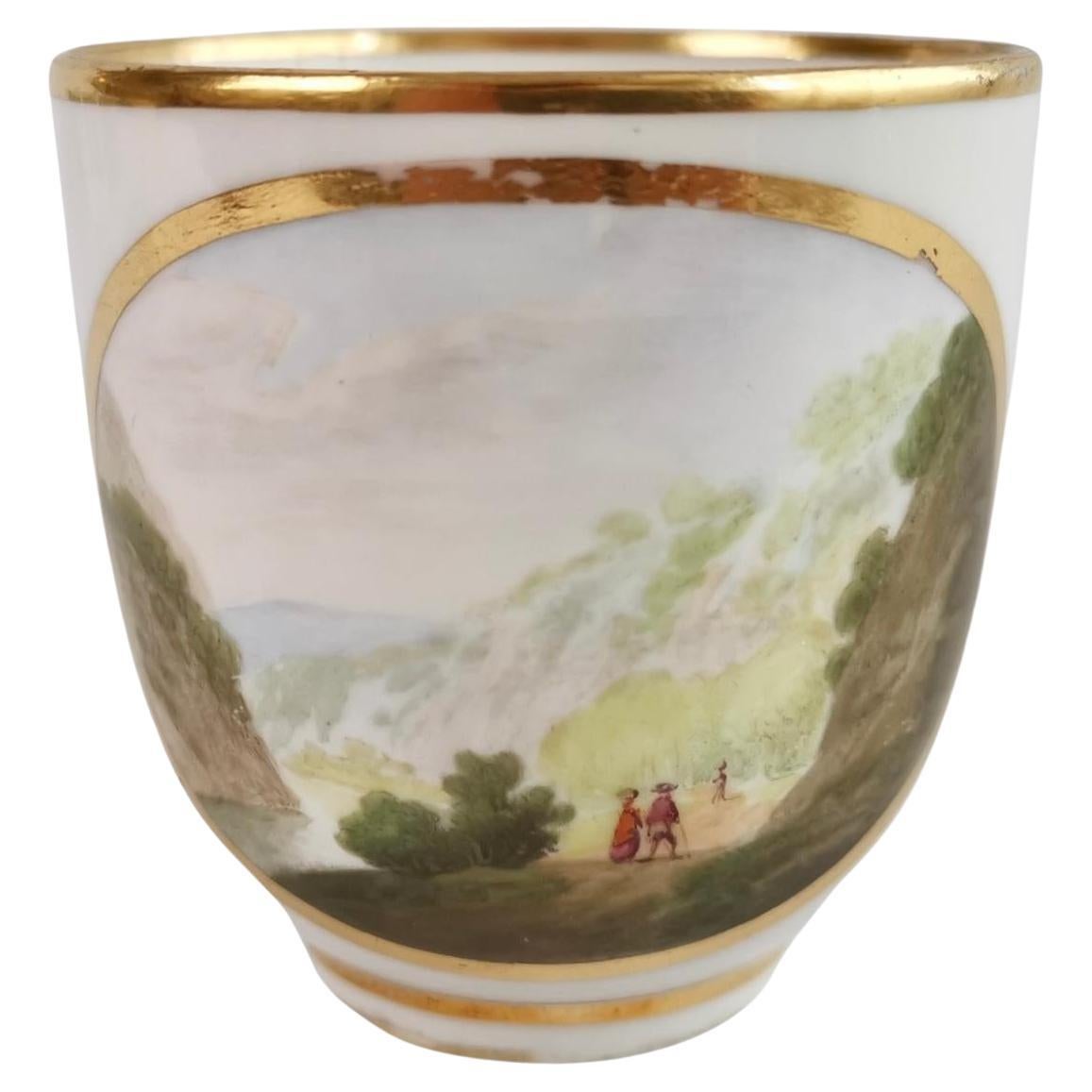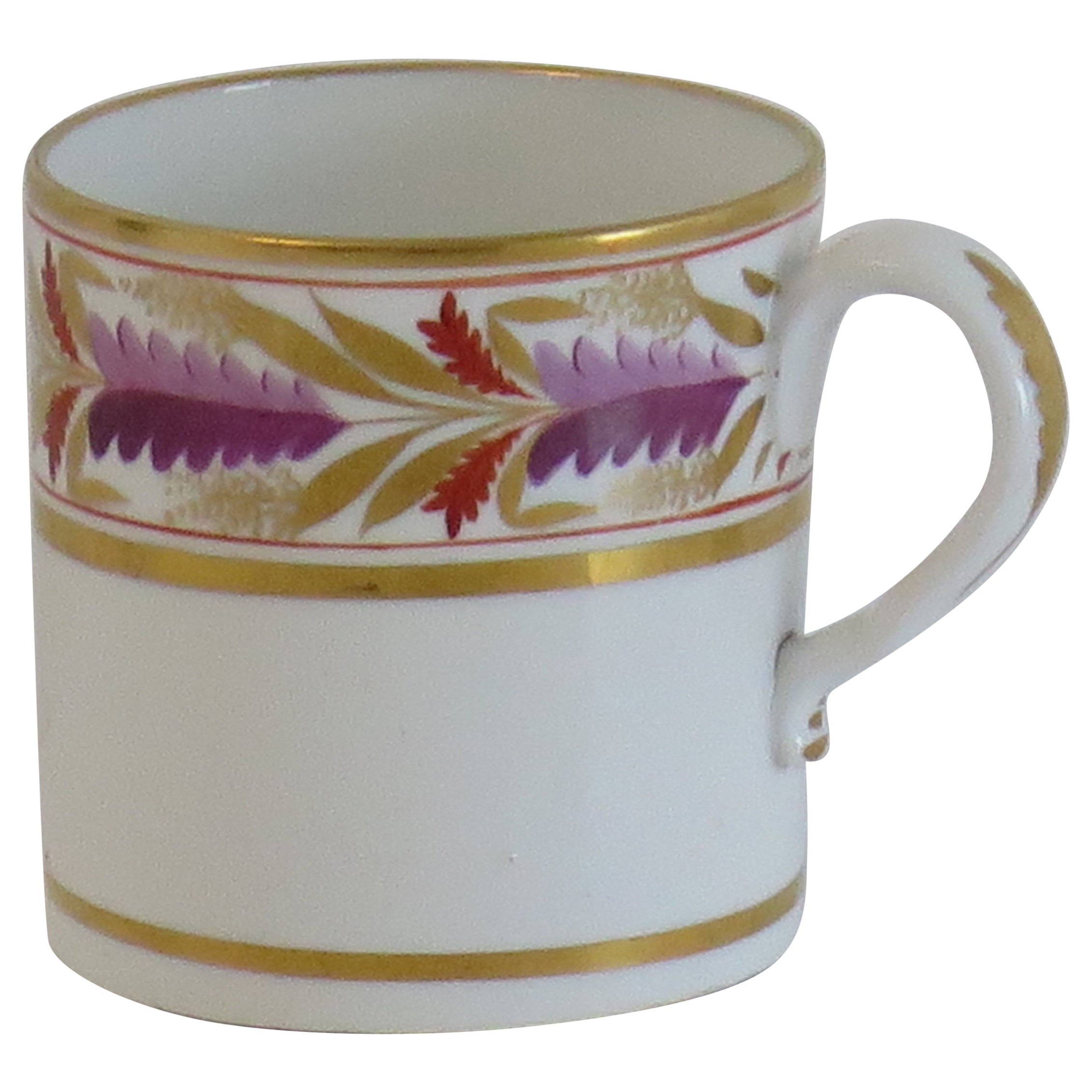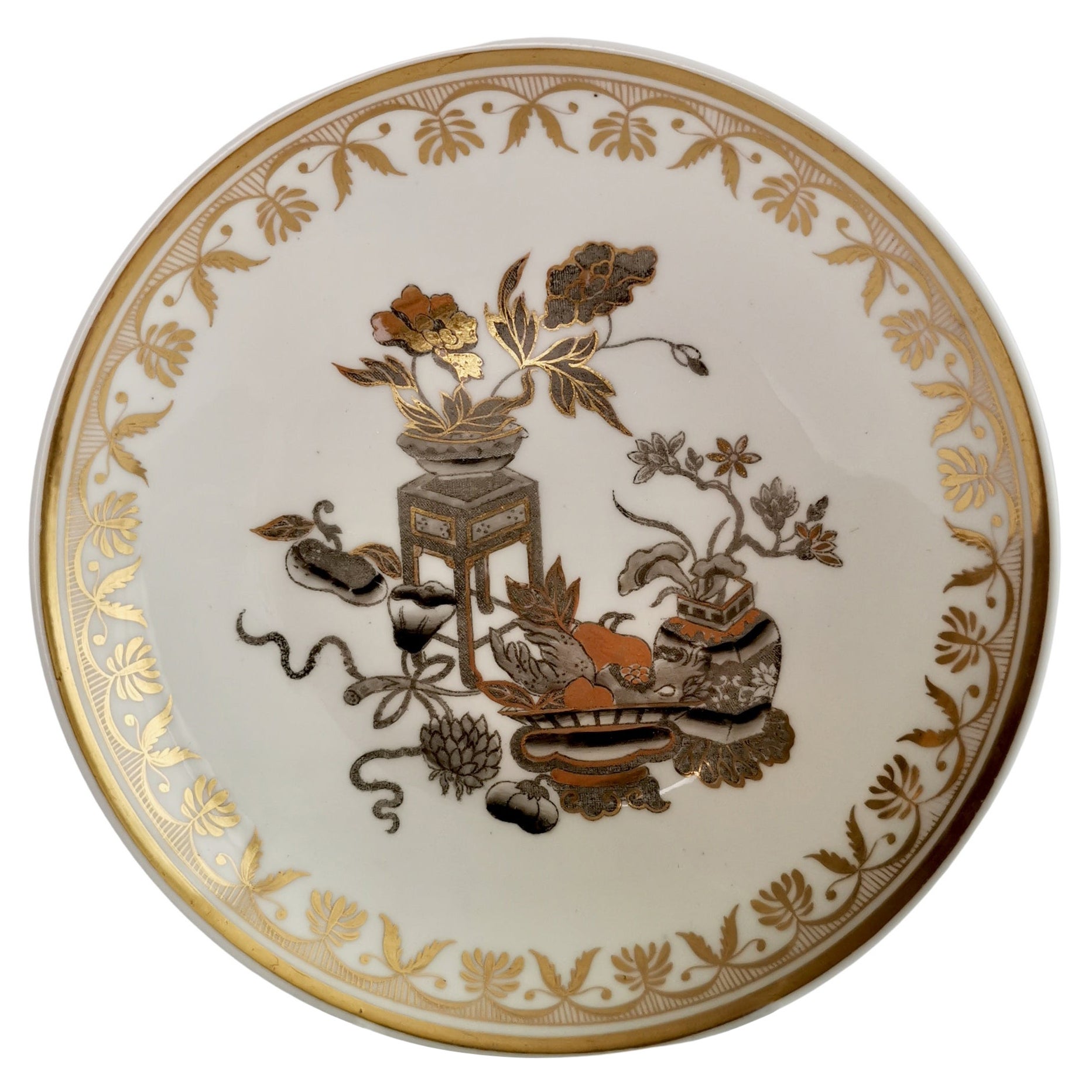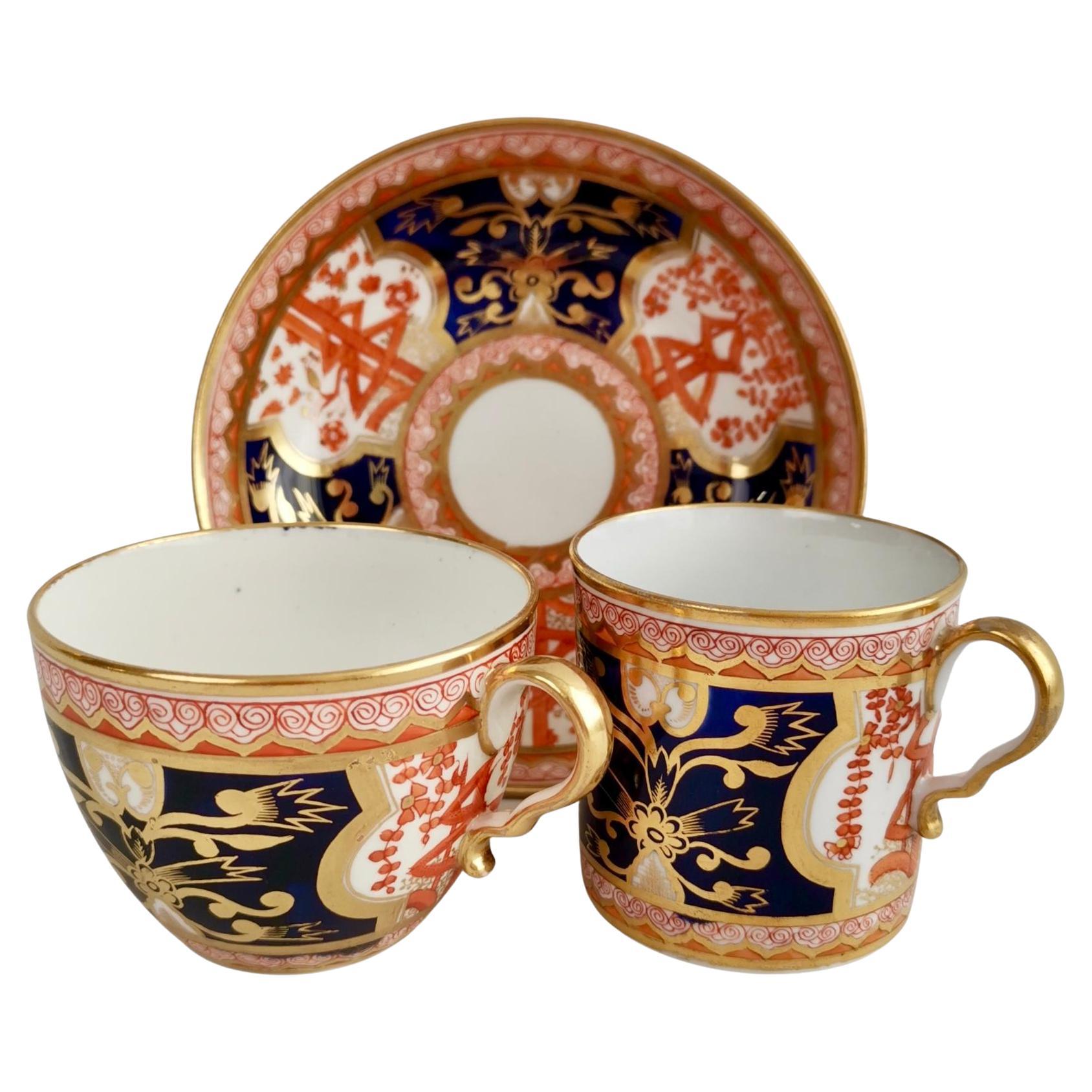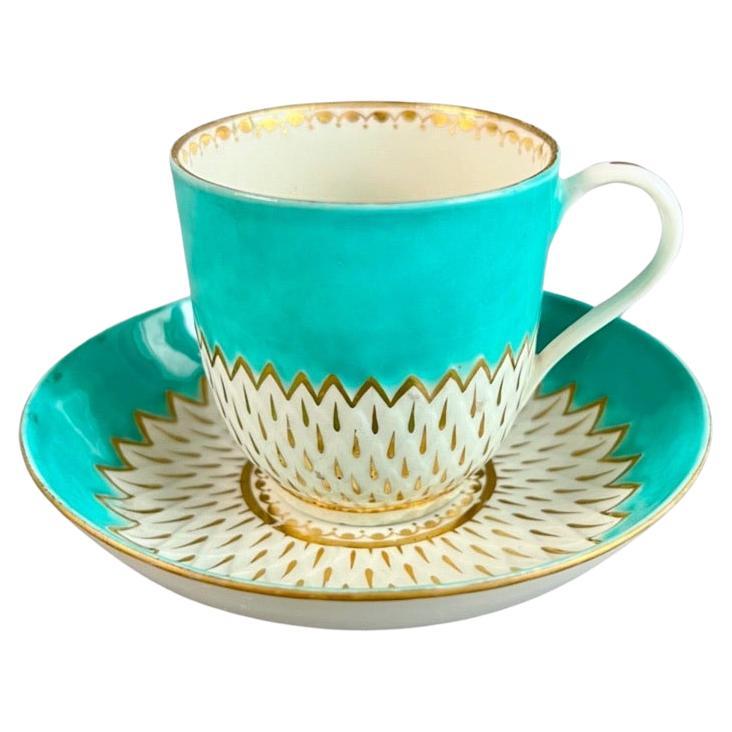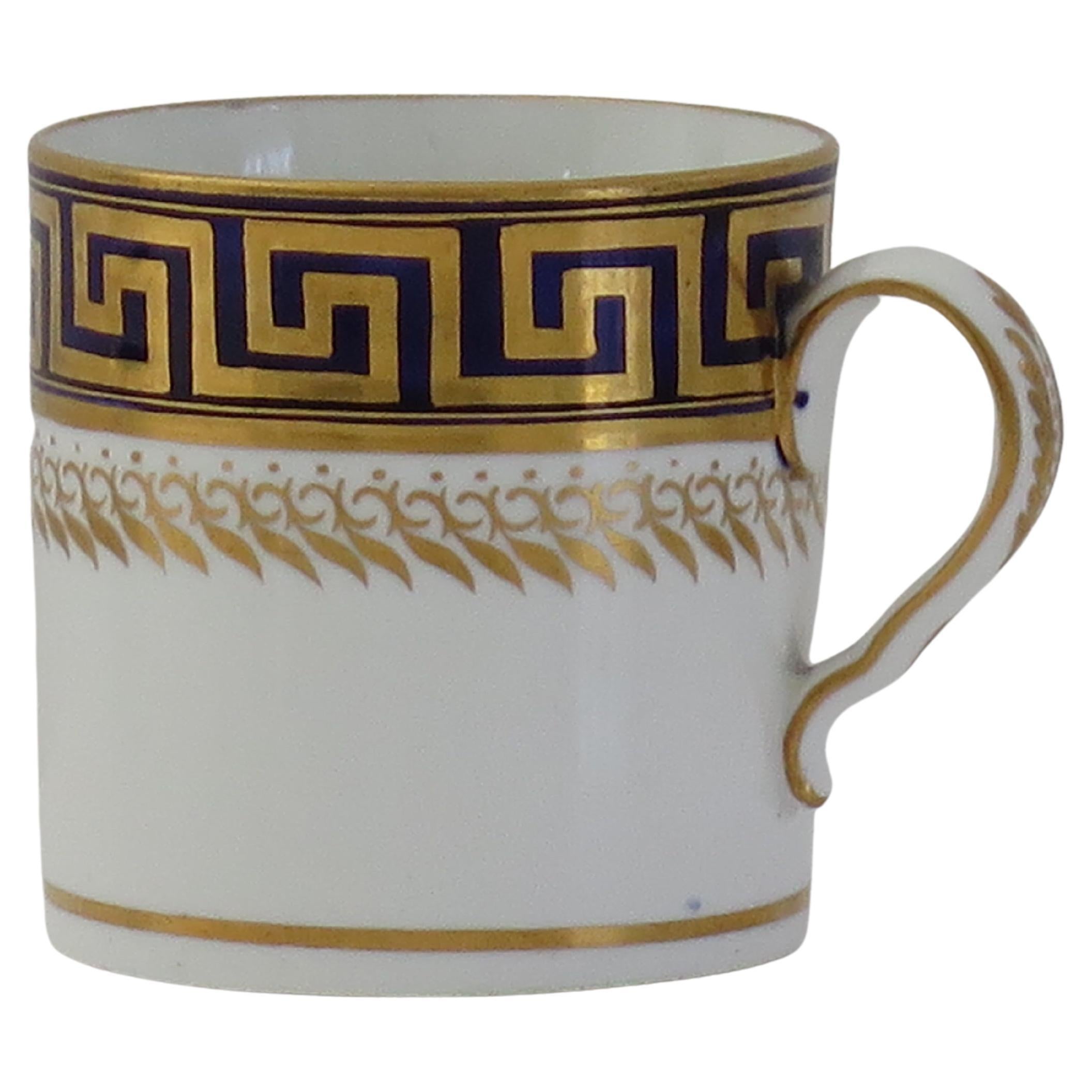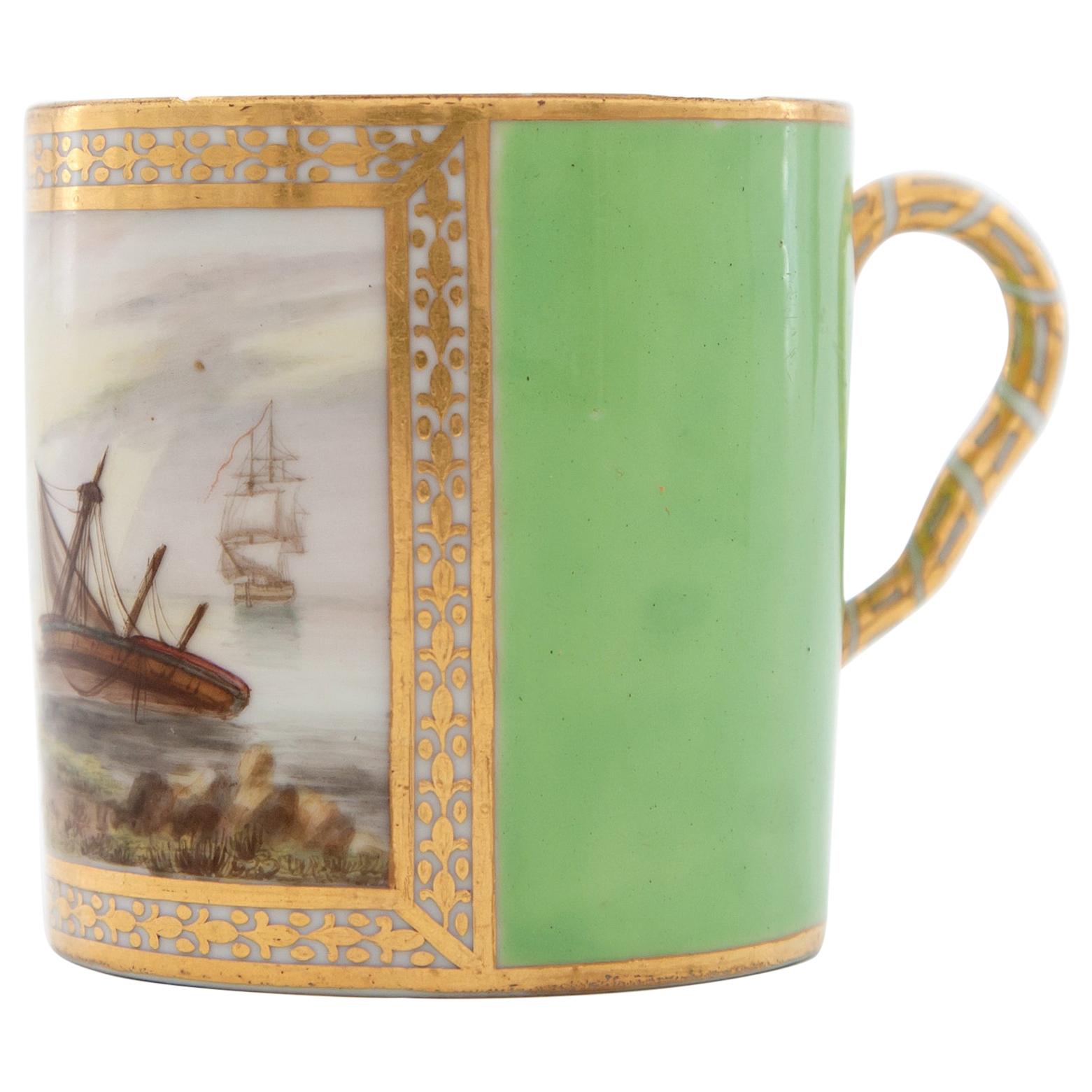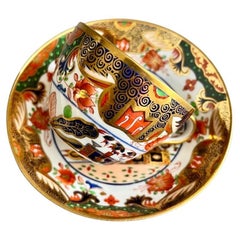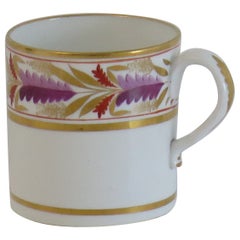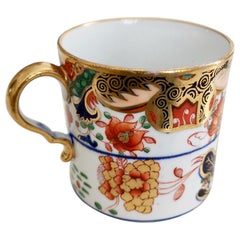
Spode Orphaned Porcelain Coffee Can, Imari Tobacco Leaf Patt. 967, Georgian 1806
View Similar Items
Want more images or videos?
Request additional images or videos from the seller
1 of 15
Spode Orphaned Porcelain Coffee Can, Imari Tobacco Leaf Patt. 967, Georgian 1806
About the Item
- Creator:Josiah Spode (Maker)
- Dimensions:Height: 2.6 in (6.61 cm)Diameter: 2.6 in (6.61 cm)Length: 2.6 in (6.61 cm)
- Style:George III (Of the Period)
- Materials and Techniques:
- Place of Origin:
- Period:
- Date of Manufacture:1806
- Condition:Wear consistent with age and use. Excellent condition without any damage, repairs or crazing and only minor wear as visible in the pictures.
- Seller Location:London, GB
- Reference Number:Seller: A-SPO20a1stDibs: LU4805119938192
About the Seller
5.0
Gold Seller
These expertly vetted sellers are highly rated and consistently exceed customer expectations.
Established in 2016
1stDibs seller since 2019
208 sales on 1stDibs
Typical response time: 1 hour
More From This SellerView All
- Spode Porcelain Tea Service, Imari Tobacco Leaf Pattern 967, Georgian ca 1810By SpodeLocated in London, GBThis is a stunning tea service made by Spode in about 1810, consisting of a large teapot with cover, a milk jug, a sucrier with cover, a slop bowl, a saucer dish and 4 teacups with s...Category
Antique 1810s English Regency Porcelain
MaterialsPorcelain
$3,400 / setFree Shipping - Spode Porcelain Teacup, Imari Tobacco Leaf Pattern 967, Regency ca 1810By SpodeLocated in London, GBThis is a beautiful teacup and saucer made by Spode in about 1810. The set is decorated with the famous Imari Tobacco Leaf pattern 967, which was first introduced by Spode in 1806. ...Category
Antique 1810s English Regency Porcelain
MaterialsPorcelain
- Chamberlains Worcester Orphaned Coffee Cup, Sepia Flower Sprays, Georgian ca1795By Chamberlains WorcesterLocated in London, GBThis is a beautiful orphaned coffee cup made by Chamberlains Worcester in about 1795. The cup has a spirally fluted or shanked shape and is decorated...Category
Antique 1790s English George III Tea Sets
MaterialsPorcelain
$200 Sale Price20% OffFree Shipping - Derby Orphaned Coffee Can, White, Landscape by Zachariah Boreman, ca 1790By DerbyLocated in London, GBThis is a very rare and stunning little orphaned coffeecup made by Derby in about 1790. The cup has a white ground, simple gilt rims and a stunning named mountain landscape painted by Zachariah Boreman. The Derby factory, later reshaped into Royal Crown Derby, is currently the oldest British porcelain factory still in production. Derby was one of the most prominent potteries right from the start of English porcelain production in the mid 1700s to today. Their items are of exceptionally high quality and many of the designs have become iconic, particularly the Imari designs; many of these are still being made today. Derby made many exciting designs in the Regency era, and this cup, which would have belonged to a large tea service, is a beautiful example. The marking at the underside indicates that the cup was produced some time between 1782 and 1800, however the style is from the mid-1790s. Zachariah Boreman was one of the most celebrated painters at Derby. He arrived at Derby around 1774 after working at Chelsea, and remained until 1794, when he left in frustration with Michale Kean, the owner. Even though Boreman became one of the prime landscape painters at Derby, Kean would not pay him more and this caused Boreman to go back to London and work for the Simms decorating studio. Boreman was most probably influenced by Paul Sandby, the chief drawing...Category
Antique 1790s English Georgian Tea Sets
MaterialsPorcelain
- Spode Orphaned Porcelain Saucer, Chinoiserie Gilt Potted Flowers, Regency ca1820By SpodeLocated in London, GBThis is a beautiful deep orphaned saucer made by Spode around 1820. The saucer is decorated with a gorgeous Chinoiserie pattern of a group of potted flowers in gilt and grey. The sau...Category
Antique 1820s English Regency Porcelain
MaterialsPorcelain
$200 Sale Price20% OffFree Shipping - Spode Porcelain Teacup Trio, Red Imari Dollar Pattern, Regency, ca 1810By SpodeLocated in London, GBThis is a beautiful orphaned teacup made by Spode in about 1810. It bears a beautiful Japanese-inspired Imari pattern. Spode was the great pioneer among the Georgian potters in England. Around the year 1800 he perfected the bone china recipe that has been used by British potters ever since, and he was also the leading potter behind the technique of transferware, making it possible for English potters to replace the Chinese export china, which had come to an end around that time, with their own designs. This was fundamental to a thriving industry that would last for about 150 years and provide half the world with their tableware. Spode porcelain is regarded as one of the highest quality porcelains around; for a soft-paste porcelain it is surprisingly hard and fine, and has a wonderful bright white colour. The pattern on this can is called "Dollar" pattern, a very famous pattern that was used by English potters in the 18th and early 19th Century. It is obvious why it is called “dollar” - but its origin is less obvious! It is thought that this pattern was derived from a very old Chinese pattern depicting a tree with elaborate foliage that hides a Chinese character representing longevity or happiness. Traditionally, this went with a an image called “Taotie”, which was used on very ancient bronze vases...Category
Antique Early 1800s English Regency Porcelain
MaterialsPorcelain
$420 Sale Price / set20% OffFree Shipping
You May Also Like
- Spode Three Georgian Imari Pattern 967 Decorated Porcelain PlatesBy SpodeLocated in Bishop's Stortford, HertfordshireA very fine set of three Georgian Imari pattern decorated porcelain cabinet plates by Spode and dating from around 1810. The small side plates are of...Category
Antique 1810s English George III Porcelain
MaterialsPorcelain
- Georgian Spode Coffee Can Porcelain Floral Leaf Gilded Pattern, circa 1810By SpodeLocated in Lincoln, LincolnshireThis is a good quality porcelain coffee can that we attribute to Spode of Staffordshire, England, made during the very early 19th century, George 111rd period, circa 1810. The coffee can is nominally parallel, with a loop handle having one lower kink, characteristic of the Spode handle. It has a fairly deep foot recess with obtuse corners and is unmarked to the base. The pattern is one of Spode's transfer printed floral leaf designs in a burnt orange colour around the upper border, all between gold gilt rings with a further gold gilt ring just above the base and hand gilding to the outer handle. We date this piece to the late George third...Category
Antique Early 19th Century English George III Ceramics
MaterialsPorcelain
- Georgian Spode Coffee Can Porcelain Pattern 1928, circa 1810By SpodeLocated in Lincoln, LincolnshireThis is a very good quality porcelain coffee can by Spode of Staffordshire, England, made during the very early 19th century, George 111rd period, circa 1805. The coffee can is no...Category
Antique Early 19th Century English George III Ceramics
MaterialsPorcelain
- Early 19th Century Spode Porcelain Coffee Can Greek Key Pattern 742, circa 1810By Josiah SpodeLocated in Lincoln, LincolnshireThis is a very good example of an English George III period, porcelain, coffee can, made by Spode in the early 19th century, circa 1810. The can is nominally straight sided and ha...Category
Antique Early 19th Century English George III Ceramics
MaterialsPorcelain
- Early Derby Porcelain Coffee Can att. to George Robertson, circa 1795By Derby, George RobertsonLocated in Fort Lauderdale, FLA green-ground porcelain coffee can made by the Derby Porcelain Factory circa 1795. This green-ground coffee can is a fine example of early Derby porcelain...Category
Antique 1790s English Georgian Porcelain
MaterialsPorcelain
$2,400 Sale Price25% Off - 18th Century First Period Worcester Porcelain Coffee Can and SaucerBy 1st Period Worcester Dr. WallLocated in Downingtown, PAFirst Period Worcester porcelain coffee can and saucer, circa 1772-1775 The fluted Worcester porcelain coffee can and saucer are finely painted with a central reserve with a land...Category
Antique 1770s Georgian Porcelain
MaterialsPorcelain
Recently Viewed
View AllMore Ways To Browse
Antique Chinese Porcelain Cups
Imari Porcelain Marks
Gilt Porcelain Bone China
Antique Bone Porcelain
Spode English China
English Imari Porcelain
Antique Porcelain Teacup
English Hand Painted Coal
Georgian Firing Glass
Antique English Porcelain Spode
Georgian Antique Porcelain
English Porcelain Cups And Saucers
Spode Saucer
Imari Japan Mark
Spode Cup
George Iii Japanned
Spode Bone China
Silver Vintage 1800
